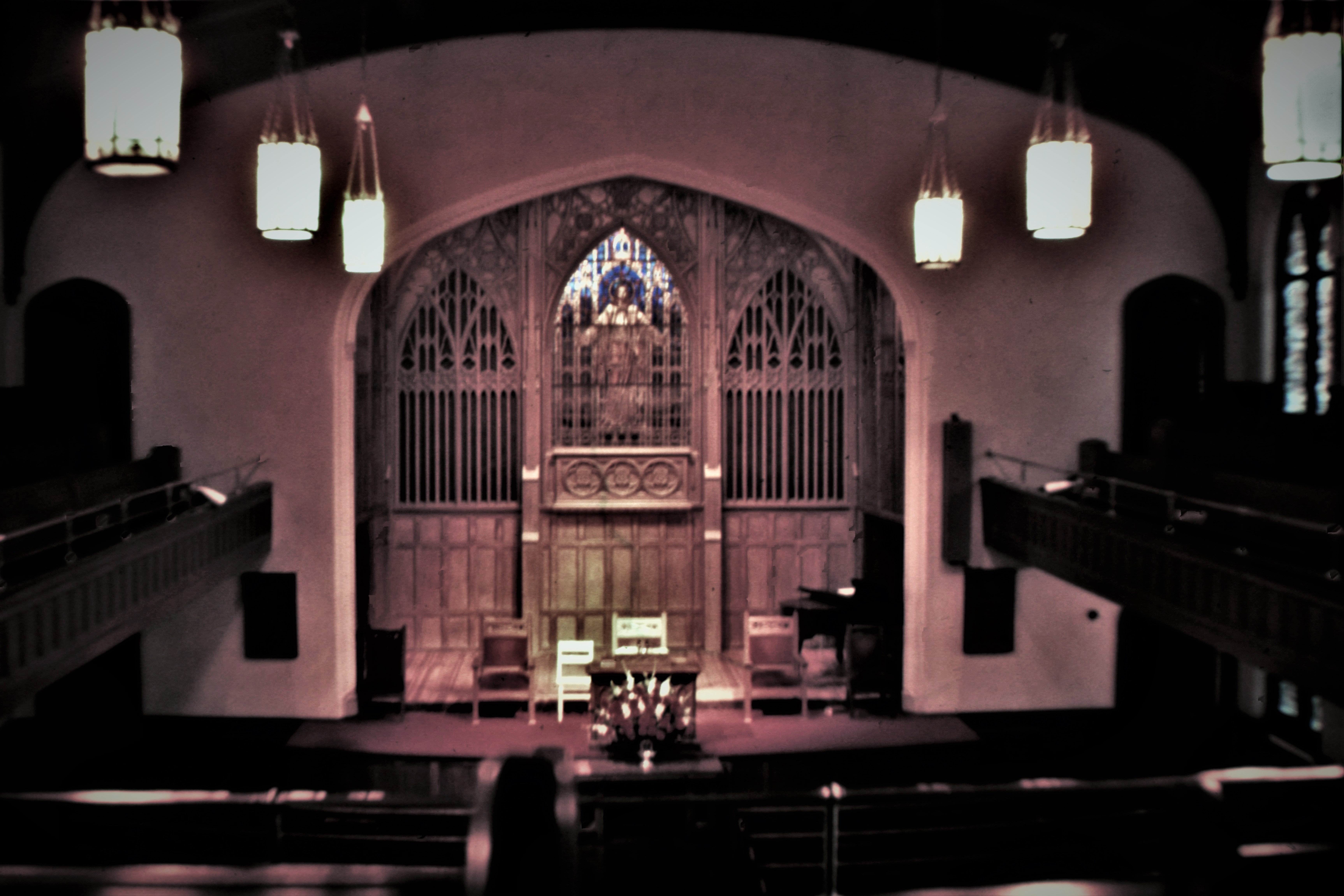{Forty days in Lent, forty thoughts, room-inations, about room(s). That’s what I’m doing here. What are you doing here?}
Dungeon: “A dark, often underground, cell or chamber for confining prisoners.” The official definition. But, you notice, not always underground. The one I write of today was on the top floor of a seminary building. If that old red brick church building had had a bell tower, this would have been the tower room. A chamber, for sure. I wasn’t exactly a prisoner there, but I did some time there, and not by choice.

Let me go back aways. When I entered seminary, my understanding was that my work scholarship was to be in the school’s radio station, at that time a 16,000 watt FM. I had done campus radio in college, and had in fact chosen this seminary primarily because it had that broadcast outlet. My call to media ministry was that strong. So, indeed, I received my work assignment, and there were some hours announcing at the station. But wait. What’s this? This thing about cleaning films? What films?
It turns out that part of my work scholarship included laboring within the bounds of the school’s Audio-Visual Center, the anchor of which (at the time) was the Reigner Recording Library. The shelves there included thousands of recorded theology courses, lectures, sermons, panel discussions, and the like, all on reel-to-reel audio tape. And then dubbed onto audiocassettes for convenient mailing to the school’s constituents. (Now, I suppose much of the material has been digitized.) This was an deep trove of church history and educational materials available to anyone who wanted to do continuing education, research, or personal devotions. (I’ve previously mentioned that I used cassettes of Thomas Merton’s lectures while I retreated at Holy Cross Abbey each summer. I borrowed those recordings from the Reigner Library.)
Also a part of that collection was a huge library of 16mm films, not necessarily for distribution or borrowing, but simply in storage. Many of the metal film cans contained network television programs that had been produced by or for the National Council of Churches. Somehow, our seminary had become the repository for those movies. “Look Up and Live” and “Lamp Unto My Feet” were long-running network series that again had some historical value, and unlike most of today’s media resources, these recordings were preserved for…well, mostly for preservation’s sake. They were stored in a non-descript (saves me from finding desciptors) “chamber” up a steep, dark stairway on the uppermost floor of the building. No rooms adjoined the film room, and no one would have heard our cries for help, we who were sentenced there to clean films.
Periodically, evil dust particles would penetrate the film cans, and to preserve the library of NBC and CBS films, we A-V scholarship recipients would have to rack up the reels and manually turn a crank to move the film to a take-up reel, and back again, while applying a cloth saturated with some unknown solution that would clean the film without melting it into a mass of celluloid. Boring. Not what I had signed up for.
Apparently the radio station announcing staff numbered so many guys (yes, all men back then) that we first year students had to work some of our weekly hours in the upstairs dungeon. We worked alone since there was only equipment for one operator. Though the work was routinely uninteresting, I have to admit that I was fascinated by the labels on the film cans, titles that showed the progressive nature of the then-mainline denominations. The films were primarily from the 1950s, and the topics ranged from the arms race to racial justice, from fresh interpretations of scripture to jazz performances. Those were the days when national networks donated production facilities and broadcast time as a public service. The ecumenical nature of the National Council of Churches allowed the networks to broadcast religious programs to a wide audience without being accused of aiding those church groups in proselytizing.
I guess a phone call to the seminary would answer a question that still occurs to me all these decades later: are those archived films still there? Have they been sent off to film heaven? Or, digitized to further preserve the historical content? Or, if they remain in that dungeon of a room, is there still a hapless seminary student dumping some unknown liquid onto an old sock and cleaning the films that will probably never seen the light of a projection bulb again?
I think I’d rather not know.








